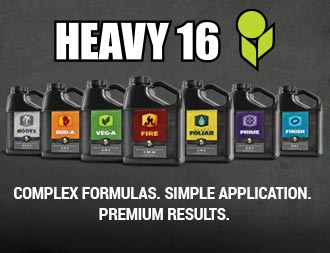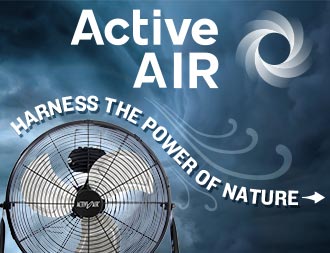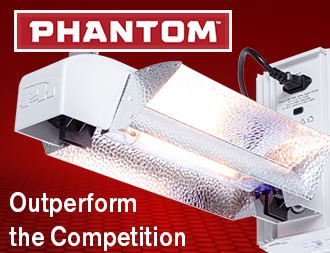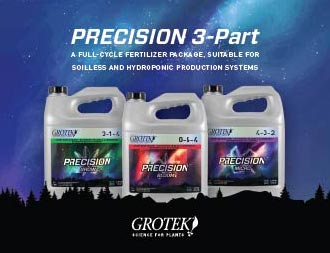Growing hydroponic tomatoes in Northeast Washington State has been a worthy challenge for Jack Benjamin at Benjamin Farms. Having a close proximity to Spokane, Washington makes it convenient for delivering vine-ripened tomatoes for $1.99 all winter long. In the long, dark Washington winters, growing off-season tomatoes would simply not be possible without High Intensity Discharge (HID) lighting. This is the story of the hydroponic tomato farm that Jack built.
Benjamin started back in 1992 before hothouse tomatoes, let alone hydroponic hothouse tomatoes, were a desired item in the Pacific Northwest. The first year was wrought with a steep learning curve typically encountered in any start-up hydroponic greenhouse operation. There was botrytis from high humidity, skin russeting when the air was too dry, blossom-end rot from dry air coupled with a lack of calcium, in addition to nitrates in the well from local livestock, overcrowded plants and no market in the fall.
After three years of dialing it in with the cultivar Caruso, Benjamin's vine-ripened tomatoes were sweet and consistent-his market loved them. He worked out the major heat and humidity obstacles, was plagued by a major problem. In the spring, he could get just $1.49 per lb. and other hothouse tomato growers began closing in. In summer, Benjamin would practically give tomatoes away because plants grew the fastest, required the most labor and brought in the least amount of money. There had to be a better way, he thought. That better way proved to be off-season tomato growing where light was the primary critical limiting factor.
Benjamin's new Stuppy 30' x 102' gutter-connect house was structurally perfect for supporting HID lamps. He installed 22 1,000W lamps, with remote ballasts 4' above the tops of the plants. He staggered Metal Halide (MH) and High-Pressure Sodium (HPS) lamps the length of the house to achieve a broader lighting spectrum. Starting in mid-October, Benjamin started supplementing natural light with 16 hours of HID light. At $.07 per kW, his operating costs increased by $750 a month. During the darkest months, when ambient light was the lowest and snow cover was thickest, his harvest rates of the 750 plants fell from 1 lb. Per week to 1/2 lb. per plant. His price didn't go down, though. Benjamin's plants continued to fetch $1.99 per lb. for the entire off-season. His labor decreased as the plants grew slower in the winter, but even with the cost of lamps, his income remained consistent. Less labor, same income and most summers off? Now things were beginning to make sense.
Benjamin noticed the plants directly beneath the lamps grew very well while the plants between the lamps suffered for lack of light. The HPS lamps definitely put out more lumens while growth under the MH lamps was less than optimum. During the dark winter days, plants stretched toward the light, their leaves curling upward. Overall, plant health suffered because of the in-between plants, and the canopy profile grew unevenly. Benjamin was constantly raising and lowering the plants to compensate for nonuniform light intensities and stretching plants.
The next year Benjamin moved the lamps closer together while adding a few more and spacing them 12' apart to try and overcome nonuniform light.
The second and third off-seasons were better, although a change in cultivars before the third year produced some weaker strain variations that took a toll on production numbers. He also switched all his lamps to HPS due to higher efficiency and high lumen output per watt. Overall, results were encouraging. Harvest rates went up from 1/2 lb. of tomatoes per plant per week to almost 3/4 lb. with no increase in labor and no decrease in income. The tomatoes continued to bring $1.99 per lb. throughout the winter. The plants between the lamps continued to lag behind though Benjamin raised and lowered the plants to compensate. Turning the heat down to 70°F helped to reduce plant stretch, but the plants simply needed more light or better distribution of available light.
Rather than buying more lamps and burning more wattage, it occurred to Benjamin his light was not being distributed well. Perhaps a light mover would offer a solution. Higher light intensities could be better used if the lamps could be moved closer to the plants, and plant production would surely increase. He installed 14 industrial grade HID lamp rotators in his greenhouse and immediately noticed an increase in plant health and vigor. Stretching stopped. Plant growth was more uniform because the lights rotated closer to the plants, distributing light more evenly over a greater area. As a result, he was able to turn up the heat and production increased proportionately, adding another 1/4 lb. (30 percent) to his weekly harvest rate. His revenues increased by $750 a month. Even though he still had some weak strain variations and some nutrient tweaking problems, harvest rates were significantly better than the previous year.
Next year, Benjamin plans to raise his wholesale price for off-season tomatoes to $2.49 per lb., since the quality and consistency of his superior tomatoes demand a higher price. He has been around long enough that markets, knowing he is a consistent producer, seek him out for vine-ripened deliveries all winter long. For Benjamin, the benefits of off-season growing far outweigh the trials and tribulations of seasonal growing with its fickle market demand, though he can't imagine ever growing through a winter without his rotating lighting system.
Less labor, more money for his produce and summers off make for a happy grower. "Our goal is a pound per plant per week in the shortest days of winter," he says. "We're not far off. Efficient lighting is definitely the critically limiting factor to off-season growing."
Michael Christian is president of American Hydroponics in Arcata, Calif.
From Greenhouse Business magazine, June 1988. Used by permissio











